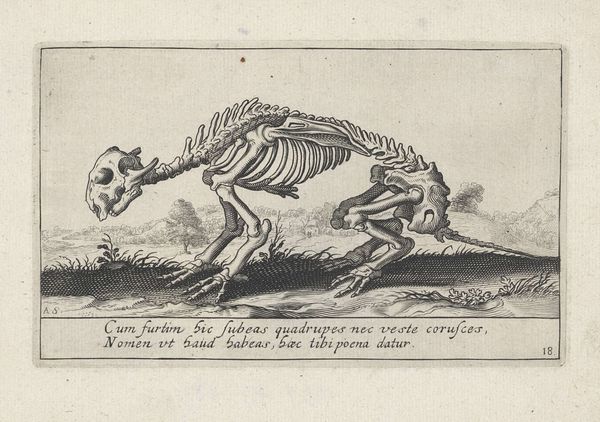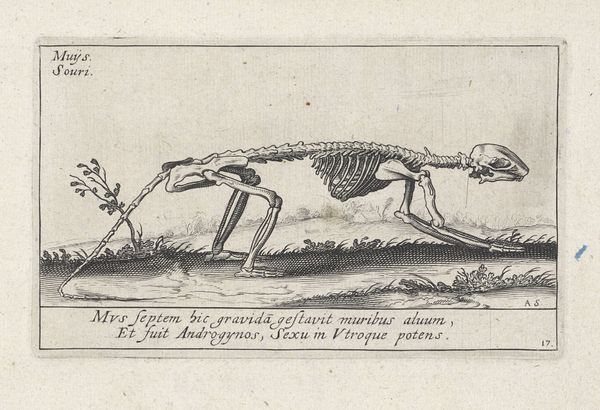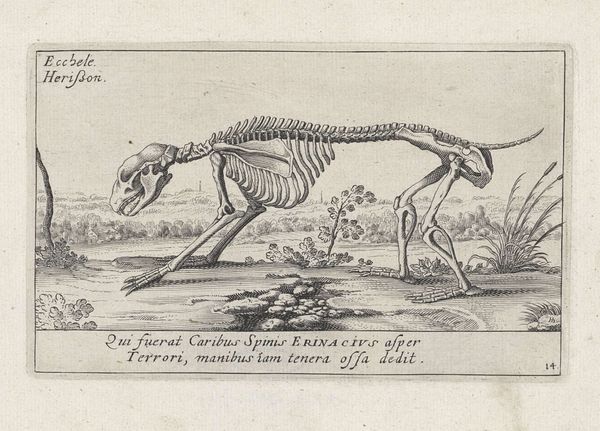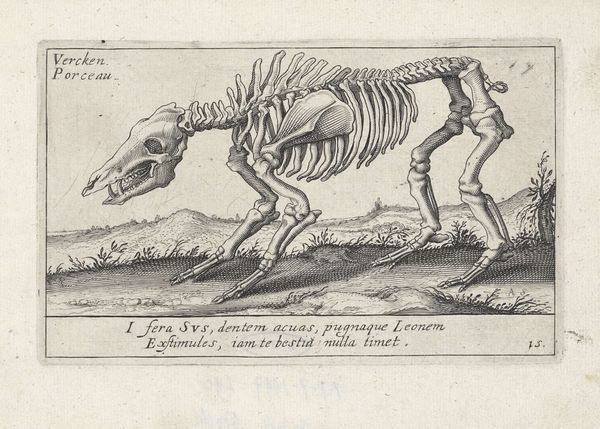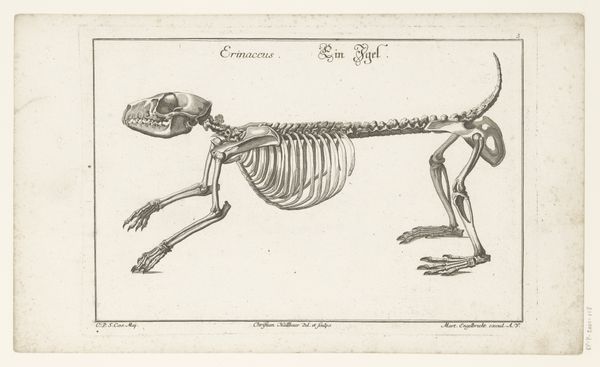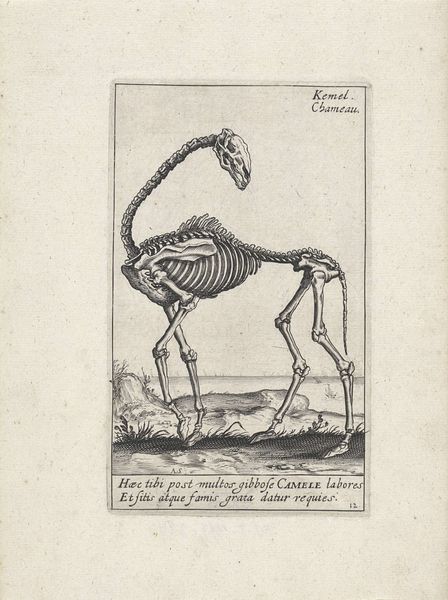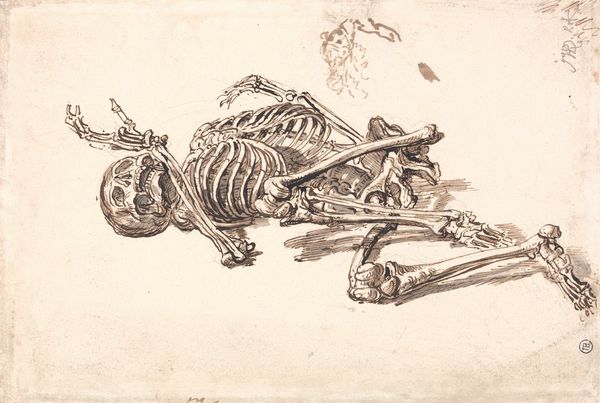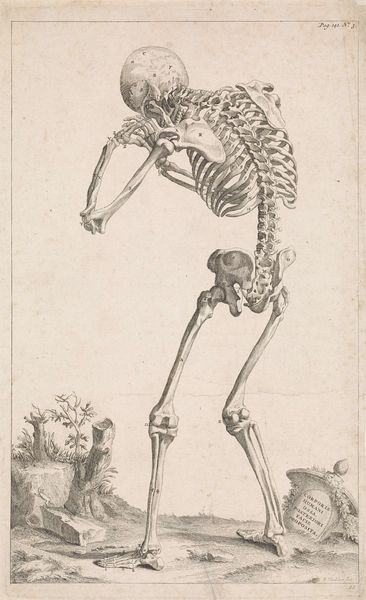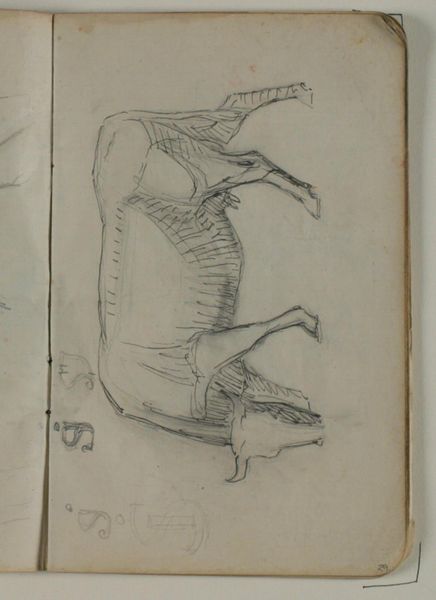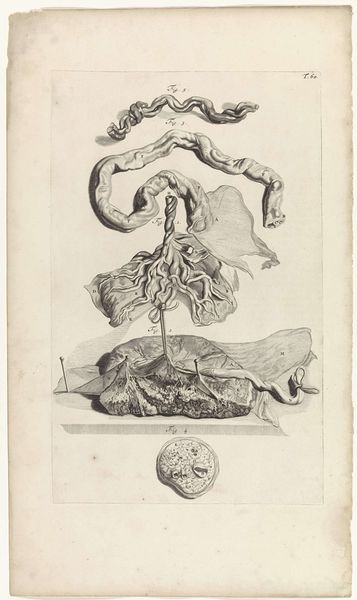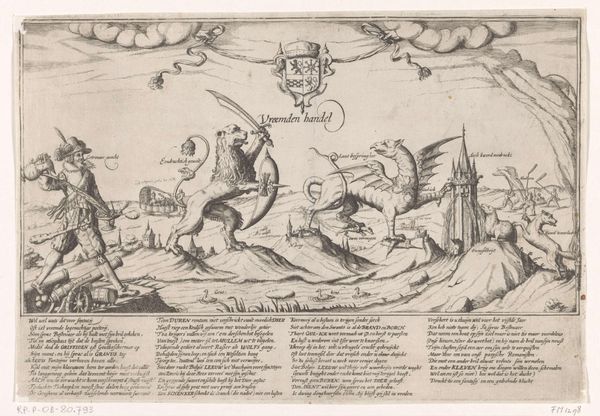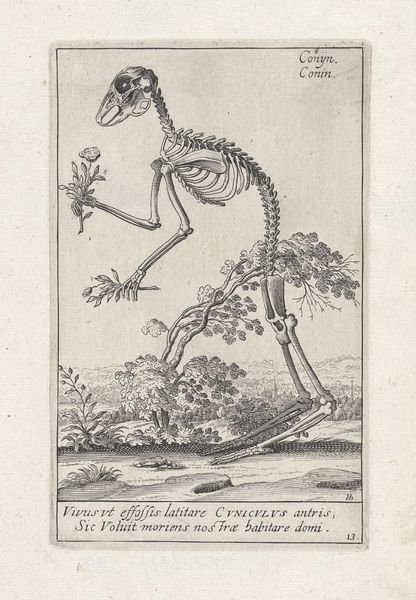
drawing, print, graphite, engraving
#
drawing
# print
#
graphite
#
academic-art
#
engraving
#
realism
Dimensions: height 207 mm, width 310 mm
Copyright: Rijks Museum: Open Domain
Christian Hallbaur created this print of a hare skeleton sometime in the 18th century. During this time, scientific illustration merged artistic skill with an emerging need for accuracy in fields like anatomy and natural history. This image comes from an era of immense scientific exploration, yet its depiction of the hare can also be considered through a socio-political lens. The skeleton is posed almost reverentially. Positioned within a historical context where nature was often viewed through the lens of human utility and dominion, it becomes a symbolic object. It moves beyond mere anatomical study. How does this formal and somewhat dignified representation challenge or reinforce the animal's position in the hierarchy of life? Consider how knowledge of the natural world was closely tied to power, and how the act of illustrating and categorizing species was an assertion of control. What does it mean to reduce a living being to its skeletal structure, and what underlying assumptions might be at play?
Comments
No comments
Be the first to comment and join the conversation on the ultimate creative platform.
